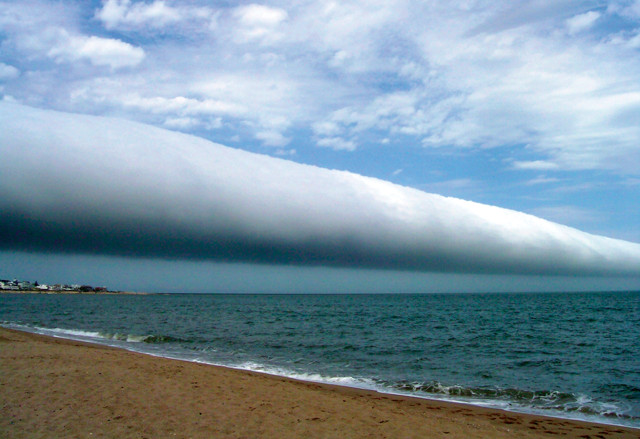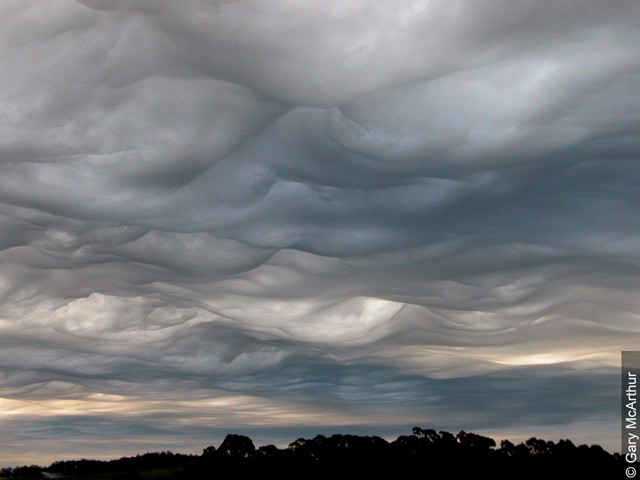
by Lucas Joel Monday, June 19, 2017

A tubular volutus roll cloud takes shape off the coast of Uruguay. Credit: Daniela Mirner Eberl, CC BY-SA 3.0.

Wavy asperitas clouds resemble a rolling, stormy sea. Credit: ©Gary MacArthur.
Familiar clouds like cumulonimbus, cirrocumulus and nimbostratus have some new company. The World Meteorological Organization (WMO) has published a new edition of its International Cloud Atlas, the first revision since 1987. The updated version — released in digital format for the first time — compiles recent observations and introduces about a dozen new terms, such as “asperitas,” which refers to a cloud whose sweeping undulations resemble the surface of a stormy sea, as well as names for clouds induced by wildfires and by human activity. There is even a new cloud species, “volutus,” which describes long, tube-shaped rolling clouds.
According to the WMO, there’s more behind the atlas update than an appreciation for cloud aesthetics. “If we want to forecast weather, we have to understand clouds. If we want to model the climate system, we have to understand clouds. And if we want to predict the availability of water resources, we have to understand clouds,” said WMO Secretary-General Petteri Taalas in a statement. Cloud classifications also hint at the weather they can create. For instance, “cumulo” refers to clouds with heaping, puffy shapes, and “nimbus” refers to rain-bearing clouds. Hence, cumulonimbus clouds are large puffy clouds that often produce thunderstorms.
The atlas is considered the standard cloud reference text for weather professionals worldwide. But it also appeals to amateur weather watchers, many of whom helped shape the revised version by sending in photographs of clouds from around the world. “Asperitas was first identified with the help of citizen science, enabled by modern technology,” noted Gavin Pretor-Pinney, founder of the Cloud Appreciation Society (CAS), in the statement. If you spot and photograph a curious cloud formation, you can submit your image to CAS by visiting the group’s website.
© 2008-2021. All rights reserved. Any copying, redistribution or retransmission of any of the contents of this service without the expressed written permission of the American Geosciences Institute is expressly prohibited. Click here for all copyright requests.